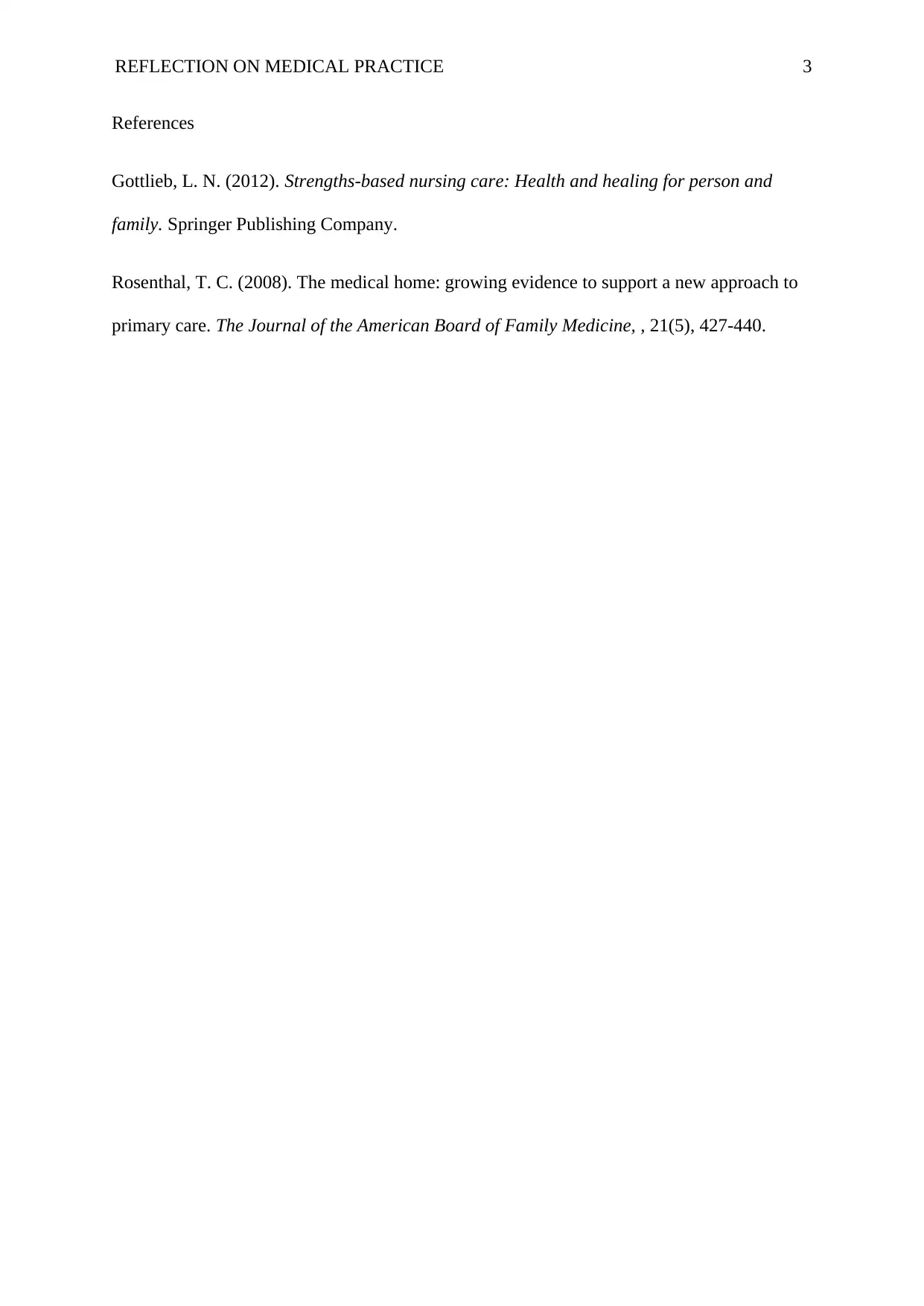Reflection on Clinical Practice: Medical and Strengths Models
VerifiedAdded on 2020/02/19
|3
|470
|40
Report
AI Summary
This report reflects on clinical practice, comparing the medical and strengths-based approaches to healthcare. The medical model focuses on diagnosing and treating illnesses, while the strengths-based approach emphasizes patient well-being and support. The report highlights the importance of integrating both models for comprehensive patient care, as the medical model addresses biological aspects, and the strengths-based model provides emotional and social support. The report uses examples like cancer treatment to illustrate how these models complement each other, ensuring patients receive both medical treatment and the support they need for recovery. The references include works by Gottlieb (2012) and Rosenthal (2008) to support the discussion of the two healthcare approaches and their impact on patient outcomes.
1 out of 3










![[object Object]](/_next/static/media/star-bottom.7253800d.svg)